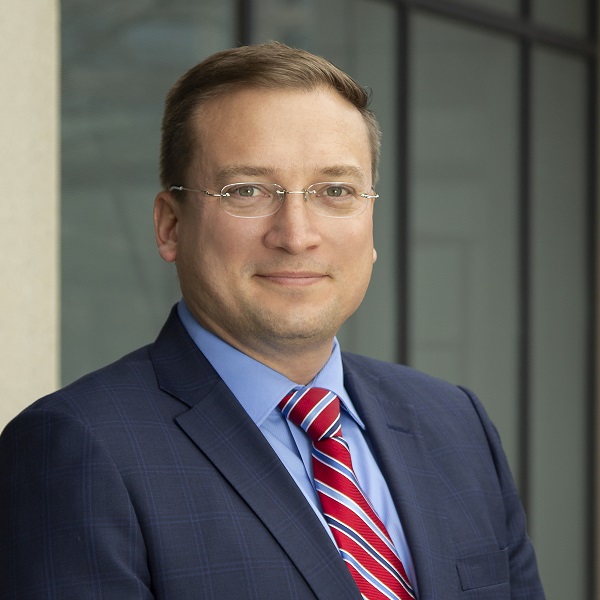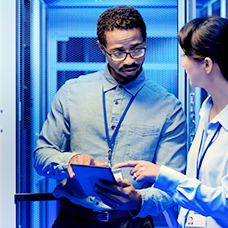
5 Elements for Assuring Safe Human Spaceflight
The field of space safety is extensive and intricate, requiring a combination of creativity, knowledge and teamwork. SAIC is creating solutions and paving the way for safer human space exploration
 08-08-2023
08-08-2023
 Joe Poist
Joe Poist
 SPACE
SPACE
Key Takeaways:
- Protecting human lives is of utmost importance as NASA advances crewed flights to farther reaches of space.
- SAIC has been serving NASA's Safety and Mission Assurance Directorate at Johnson Space Center since 1997.
- Our safety teams have provided safety and risk assessments on many NASA programs.
LISTEN TO THIS BLOG:
Advancing human spaceflight hinges on expanding our presence in low Earth orbit, establishing a human lunar footprint and carrying out exploration missions like visiting Mars. NASA’s Artemis program plans to land on the moon's south pole by 2024. The agency also plans to build a base there by the end of the decade. These goals capture the imagination and require thoughtful approaches to safety.
1. Calculating risk without stifling innovation
NASA’s safety posture pushes engineering boundaries within a framework that balances cost, schedule, technical and safety risks. In the space community, there is recognition that too much regulation and oversight may stifle innovation, while not enough regulation may result in catastrophic consequences.
SAIC has been working with NASA's Johnson Space Center (JSC) since 1997, serving the Safety and Mission Assurance Directorate. We have contributed to many complex programs:
- Space shuttle program
- International Space Station assembly and operations
- Constellation program
- Commercial crew and cargo programs
- Artemis program (including the Orion spacecraft, Human Landing System (HLS), Extravehicular Activity and Human Surface Mobility program and Gateway on-orbit outpost)
2. You need quantitative and qualitative risk management
Our experts develop and apply quantitative and qualitative techniques in early system design and development phases to detect and mitigate safety issues. SAIC recently evaluated the initial design and concepts of the HLS. This assessment enabled necessary design modifications to be made during the HLS's design process. We will continuously evaluate safety and reliability processes in subsequent product development phases, as the system's design matures.
3. Collaboration is crucial
Intra-organizational collaboration is essential for effective integration and integrated risk management. SAIC's systems engineers and managers collaborate with NASA counterparts in different forums, including formal program boards and panels. Our team members actively participate in project safety and reliability review meetings and boards for all JSC-managed human spaceflight programs. Our subject matter experts assess design and mission operations concepts and offer technical risk-reduction recommendations. A critical element of this activity is to include the full set of systems that are part of the complex systems-of-systems constellation.
4. When it comes to safety, speak up
One of the challenges of the safety community is balancing acceptable risk with the technical objective and the ultimate reward. To effectively assess risk, evaluate technical capabilities and ensure the safety of the mission and human crew, every discipline must share its own assessments and interact with their peers. This creative tension is essential to reaching collaborative solutions and avoiding the pitfalls of groupthink.
5. Foster a culture of learning and trust
Capturing significant incidents and near-accidents in human spaceflight helps us understand the dangers that need to be controlled. Additionally, providing a visual summary of the past aids in this understanding. This is crucial as we continue to make progress in space exploration. For NASA, we develop and maintain a graph called "Significant Incidents and Close Calls in Human Spaceflight." It helps us see the dangers of space exploration and learn from past experiences to make future missions safer.
A safer space frontier
The field of space safety is extensive and intricate, requiring a combination of creativity, knowledge and teamwork. SAIC is at the forefront of this challenge, creating solutions and paving the way for safer human space exploration.
Although the journey ahead may be risky, it also presents numerous opportunities. We have the expertise and advanced tools to prioritize safety as the basis for future space missions. By working together, we can ensure that space exploration continues to be a place of discovery and adventure for all who are willing to take on the challenge.
Learn more about how we support customers with solutions and capabilities for the space domain at SAIC's Space page.




